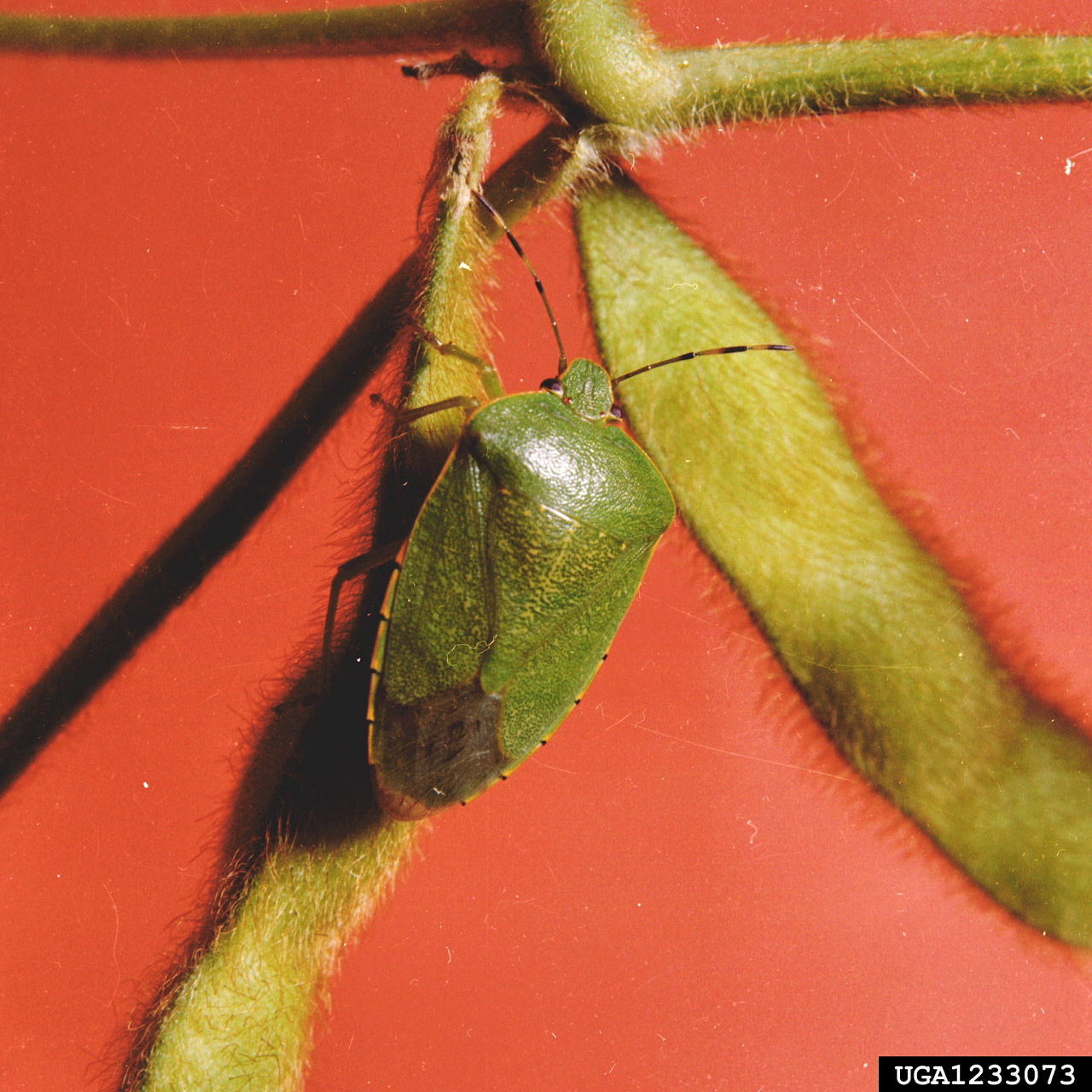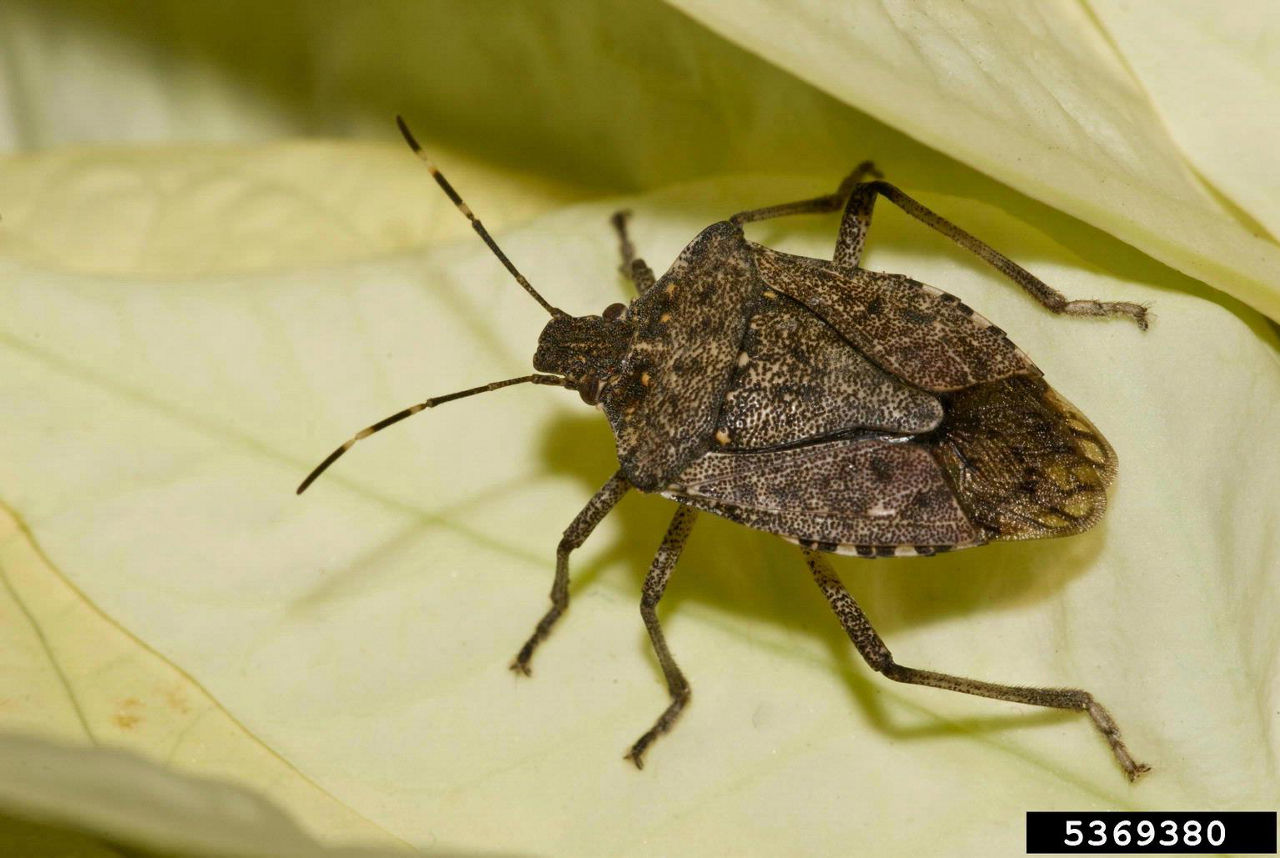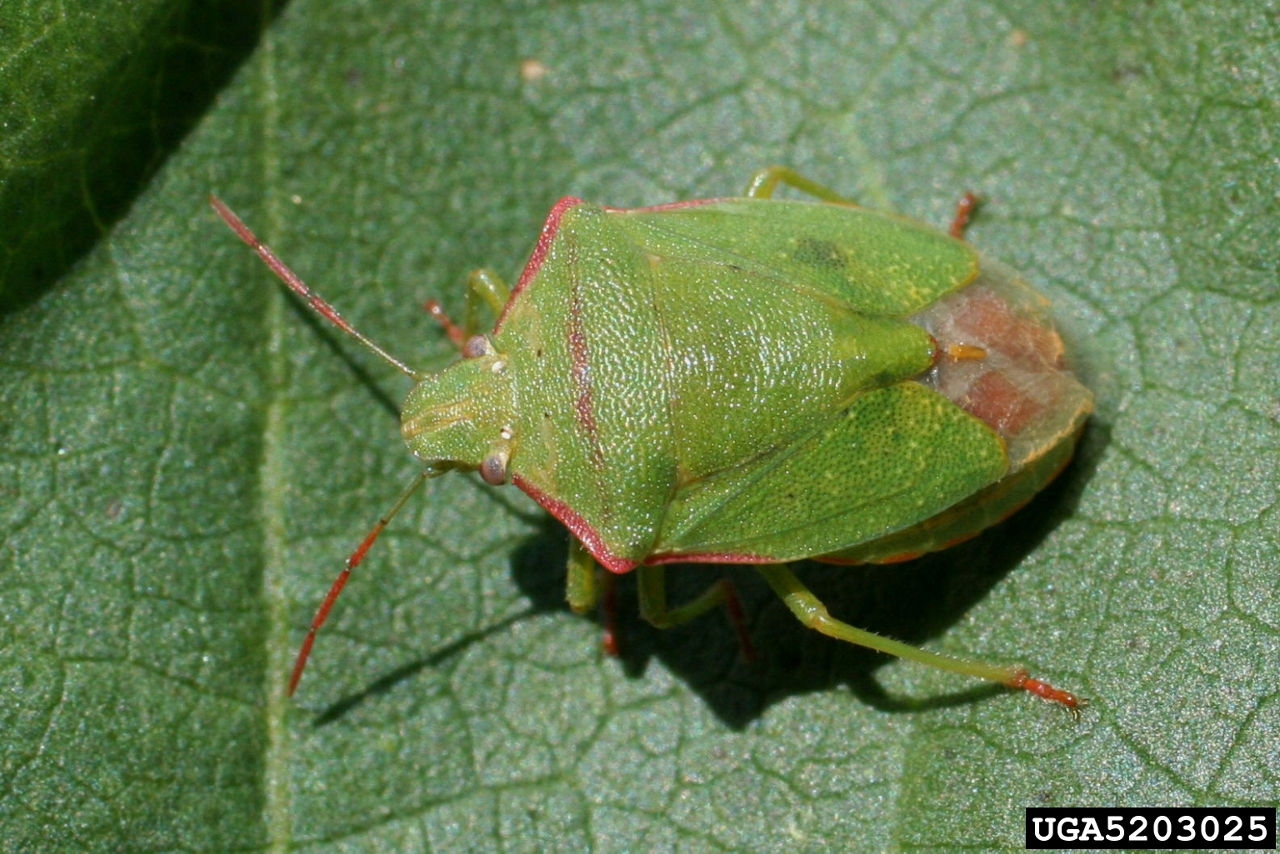Stink bug Identification & Management
June 2, 2025
Stink bugs are piercing, sucking insects that have historically been known to cause economic problems in southern state areas and occasionally in the southern corn belt. However, in recent years, they have become a growing concern throughout the Corn Belt and Midwest.
Identification
There are several species of stink bugs that can cause injury to soybean and corn; however, the four most prominent species are green stink bug (Figure 1), brown marmorated stink bug (Figure 2), one-spotted stink bug (Figure 3), and red shouldered stink bug (Figure 4).
Regardless of species, all stink bugs are shield-shaped as nymphs and adults. Depending on the species, color can change from the nymph to the adult stage. Numerous resources are available to help identify which species may be present.




Stink Bug Biology
Adult stink bugs can overwinter in leaves, under the bark of trees, or in wood piles. It is not fully known if green stink bugs overwinter in northern states or migrate, but brown, onespotted and red-shouldered stink bugs appear to overwinter in all areas.
In the spring, stink bugs leave overwintering sites and move to host plants. This can be wheat, alfalfa, soybean, and seedling corn. After feeding they lay clusters of eggs in areas where they are feeding.
Injury to Corn and Soybean
Corn
Stink bugs can injure corn at the seedling stage by feeding on the base of the plant. This can result in leaves being twisted as they emerge and irregular seedling growth. In the most extreme cases death can occur from damage to the growing point. In corn reproductive growth stages, both nymphs and adults can cause damage by piercing the husk and feeding on kernels. This typically appears as damaged or missing kernels.
Soybean
Damage in soybean typically occurs in the reproductive growth stages when the stink bugs pierce pods and developing seeds. This can cause deformed seeds and pods. Yield loss can vary depending on when feeding occurs.
Stink Bug Management
Economic thresholds should be used when determining whether an insecticide application is warranted. This threshold may vary by state and/or geography and is dependent on commodity pricing. Consult your local extension agency to determine a specific economic threshold for your state as well as which insecticide is appropriate for your geography.
Summary
In conclusion, although stink bugs can be an economically impactful insect, through proper identification and management, yield potential and financial loss can be minimized.
Channel Agronomist
Patrick Koenig
1110_568200